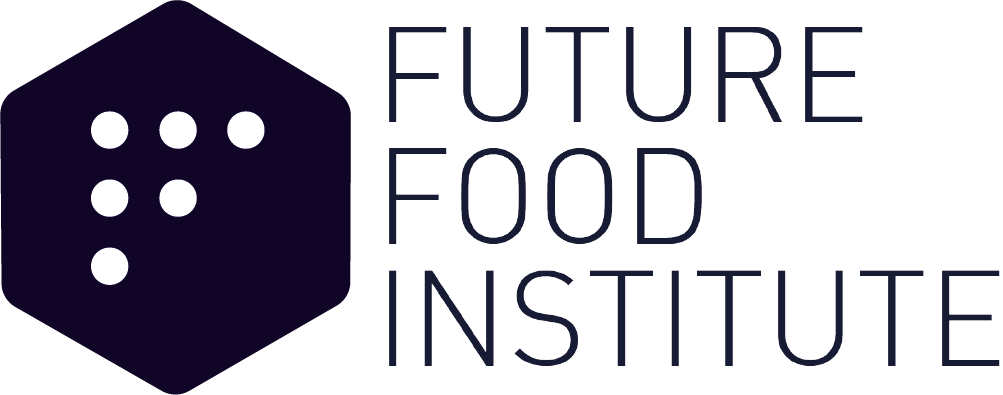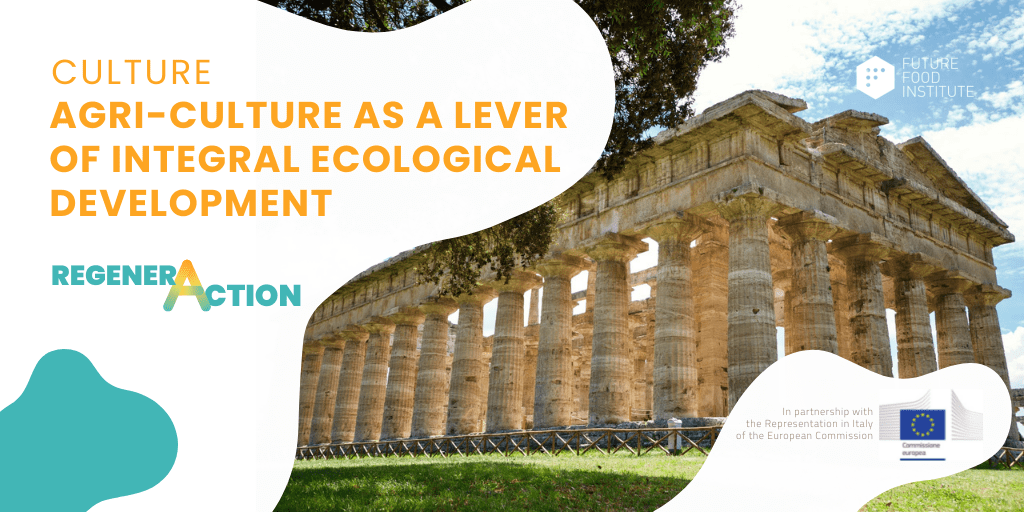The Challenge: Preventing cultural desertification
Culture understood as a set of values, symbols, conceptions, beliefs, ideas, customs, and traditions handed down, acquired, and widely shared by a certain people is the foundation on which the individual and collective identity of a society is forged. Yet, in the modern rush for progress and incessant need for efficiency, we are gradually depriving society of the essentials. We have everything, without having anything wholly: time, health, nutritious food, a healthy environment, or identity.
A world without human biodiversity would mean a world that speaks the same language, thinks the same way, has the same vision and eats the same foods. It would be a world without wonder, but also without natural variety, reflecting the diversity of cultures, practices, and approaches. We could not play a symphony with only one note. Likewise, we could not wish to restore the maximum representation of natural variety with human uniformity.
The recent pandemic has put reflection back at the center of the individual’s experience, a taste for what has intrinsic and non-superficial value, an interest in anything that can add color and nuance: an inexorable return to human values so the need to reconnect with our local terrain and peculiarities. Culture is thus rediscovered as a resource for the psychological well-being of the individual, and as a glue of solidarity and union for a people, a society, a nation.
The time for restart is now ripe, and it is necessary to treasure these lessons to design a future that knows how to value and preserve culture, a real lever for individual, collective, territorial, and even economic regeneration.
Food culture, land culture: The value of preserving diversity
“Cultural diversity is as necessary for humanity as biodiversity is for nature,” stresses Article 1 of the Universal Declaration on Cultural Diversity, recognizing the central role of the plurality of identities and cultures that make up humankind. Cultural diversity encompasses varieties of practices, rituals, knowledge, techniques, languages, beliefs, ethnicities, religions, and values: the buffer around which individuals build their thoughts and perspectives, but also the roots of natural richness. It is therefore not surprising that, in general, the most biologically diverse areas are also the most culturally diverse.
The Mediterranean basin is an excellent example of this, as an area that is extremely rich in both biological and cultural diversity: languages, dialects, and rituals blend seamlessly with the land, landscape, and nature. Culture is also how populations live, adapt, produce, and process food. Think of the tens of thousands of techniques that family farming and fishing communities have developed over time to cope with natural disasters, conserve food, and increase resilience; all of which have inevitably enriched our society and the Planet. Preserving these kinds of skills means promoting diverse agroecological systems, giving voice and rights to marginalized groups, and protecting the income of family farmers and fishers so that they remain on the land as true custodians of our natural and cultural diversity.
But cultural wealth is also an incredible economic lever, if able to be fully exploited. With 55 UNESCO Sites, a plethora of museums, art galleries, festivals, and endless farms that support food and wine culture, Italy is an open-air museum. Promoting thoughtful and responsible forms of tourism thus becomes a tool for consolidating the country’s identity values, instilling in local people feelings of belonging that drive them to care for their territories and their tangible and intangible heritage, but also directly supporting the often small and very small businesses that nurture local culture.
Along with the tourism sector, the cultural and creative sectors have been among the hardest hit by the crisis triggered by the pandemic and lockdown, registering a decline in jobs between 0.8 and 5.5 percent in OECD regions. Our country, in particular, data report a -70 percent drop in revenues for the cultural and creative industries sector in 2020. Yet the cultural sector has been one of the fastest responders to innovation and adaptation needs, with many public and private providers moving content online for free, unlocking the important potential for synergistic complementarities.
This means investing in the economy of beauty, an economy capable of returning an appreciation of the value of individuals, nurturing the connection between them and the land, and creating communities of active, aware, and responsible citizens. Enhancing Italy’s cultural, architectural, food and wine, and landscape heritage means sustaining Italian identity, supporting the economies of small and very small businesses, encouraging the survival and balance of the rich urban and rural fabric that is the true soul of our country, and preventing depopulation and abandonment of entire areas. It means supporting a sector that produces 17 percent of our country’s GDP.
The European Strategy for Culture
Improving the supply and preservation of culture is one of the priorities of Europe, which in recent years has adopted several strategies and coordinating policies to foster an enhancement of the sector in the member states, which remain the main responsible parties in this policy area.
Following the direction outlined by the 2007 European Agenda for Culture, in 2018 the Commission adopted the New European Agenda for Culture to support the sector’s evolution by outlining the framework for European-level cooperation for culture. The New Agenda is divided into three main areas: economic, social, and external dimensions and aims to focus on the positive contribution culture makes to European society, its economy, and the international collaborations and relationships it helps to create.
The Commission is convinced of how cities and regions throughout Europe can be the standard-bearers for a new kind of culture-based development, making them ideal players and partners in anticipating trends and experimenting with new models of economic and social innovation.
This idea is also part of the 2019-2022 Work Plan of the Council of the European Union, a strategic and dynamic tool for cultural cooperation that addresses policy developments and sets priorities while respecting the principles of subsidiarity and proportionality. The latter also stresses that member states should pay special attention to the role of culture at the local level, the quality of architecture and the living environment, aspects that are being worked on through the New European Bauhaus.
The European Framework for Action on Cultural Heritage also includes a number of actions relevant to the cities and regions of the member states. The proposed European initiatives focus specifically on regeneration through cultural heritage, promoting adaptive reuse of historic buildings, and balancing access to cultural and natural heritage and sustainable tourism.
The role of culture in integral ecological regeneration
Culture is methodological and scientific techniques; culture is ancient ecological knowledge and know-how; culture is the history, traditions, lifestyles, and invisible threads that help shape the identity of a territory or country.
This is why culture is the perfect meeting of education, community, and innovation, the three action areas of the Future Food Institute, in which food offers one of the most obvious connections. Because food, even before being a commodity and a need, is a universal language capable of uniting and bringing together people of different ages, religions, cultures, traditions, and areas of experience. In fact, the Mediterranean Diet represents one of the most tangible examples.
An Intangible Cultural Heritage of Humanity, recognized by UNESCO since 2010, the Mediterranean Diet is mastery, attention, quality, diversity, authenticity, and typicality of a people who have always seen in food the values of union, connection, and care. Without diversity, we would probably not have on our tables today products as authentic as they are peculiar, such as “mozzarella in the mortella,” “invented” by the mastery of the shepherds of Pollica to ensure the long-term preservation of the cheese.
This form of culture and its values of collective prosperity that we have inherited from the Mediterranean basin, and which the Future Food Institute protects and promotes directly through the Paideia Campus in Pollica, is an incredible element of territorial and local development that must be shown. That is why, from the Campus, we activated the Agri-Culture Youth Welfare project, to revive local skills and entrepreneurship, providing young people from Cilento with tools such as innovative coaching techniques and Design Thinking, to re-discover and enhance the hidden values and culture of the territory by creating new opportunities and redistributing beauty for the welfare of the community. The success of the course was dictated by the centrality given to the values of the territory, re-discovered and used as a starting point to ensure a sustainable future.
Culture must be brought back to the center of global and national debates; it must return to young people, the true protagonists of the transition. This is what we did with the Hackathon in Schools 2021, in which young people from all over Italy imagined museums capable of engaging both on an emotional and experiential level with the new generations, and how it was re-proposed in last month’s Design Challenge in Pollica, in which the Museum of the Mediterranean Diet was rethought to make it more attractive, alive, and “living.”
This is the true potential of the Mediterranean Diet for Italy: proof that models of integral ecological regeneration can also economically sustain an entire country, our supply chains that decide to invest in quality rather than quantity. This is the work we are carrying out, from Pollica, together with the Italian representative delegation of the Mediterranean Diet Emblematic Communities. The export of the Mediterranean culture symbolically closes a historical circle, opened by Ancel Keys, who arrived in Pollica in the mid-1960s and discovered and made the Mediterranean Diet famous all over the world. For this reason, Pollica’s first international expedition, as coordinator of the UNESCO network of emblematic communities, led by Sara Roversi, founder of Future Food, and Stefano Pisani, mayor of Pollica, departed from New York, the capital of the world and headquarters of the United Nations. Thus the cradle of the Sustainable Development Goals was identified as the ideal destination where to plant the seeds of the Mediterranean Diet: the schools of New York, to spread, starting with the new generations, the values of a lifestyle that has been able to express an incredible soft power through which it is possible to “cultivate” sustainable, inclusive, and resilient communities.
The journey of the European Agrifood Week, begins by embracing the culture of the territory, emphasizing the crucial role it plays in promoting development models capable of enhancing production chains, identity heritage, and local economies, taking care for the protection of essential resources, interpreting a true concept of “One Health” where the health of man, the health of the planet and the community, in the “Mediterranean” conviviality, become the true nexus.
👉 Follow us on Twitter!
#RegnerAction2022 #EUAgrifoodWeek2022

